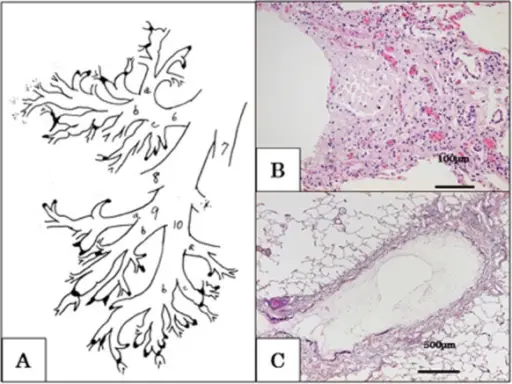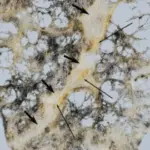Bronchiolitis is a condition characterized by acute inflammatory damage to the bronchioles that are typically instigated by viral infections.
What is the Pathology of Bronchiolitis?
The pathology of bronchiolitis is:
-Etiology: The cause of bronchiolitis is an inhalation injury, infection, drug or chemical-induced reactions, connective tissue diseases, organ transplantation, and idiopathic.
-Genes involved: Cytotoxic T-lymphocyte antigen (CTLA) 4.
-Pathogenesis: The sequence of events that lead to bronchiolitis are: Goblet cells Proliferation marks an excessive mucus production. Chemokines and cytokines from ill respiratory epithelial cells, intensify cellular enrolment into infected airways by immune response resulting in inflammation, edema which obstruct bronchioles.
-Histology: The histology associated with bronchiolitis shows bronchiolar inflammation, peribronchiolar fibrosis and obliterative fibrosis of the bronchiolar lumen.
How does Bronchiolitis Present?
Patients with bronchiolitis typically more frequently in males than in females present at age range of 1 to 2 years with peaks at 2 to 8 months. The symptoms, features, and clinical findings associated with bronchiolitis include breathlessness, wheezing rapid shallow breathing, cough, and retractions of lower ribs and sternum during inspiration.
How is Bronchiolitis Diagnosed?
Bronchiolitis is diagnosed through a medical history and physical exam, laboratory studies- WBC Count and differential, pulse oximetry, viral testing. Imaging chest radiography.
How is Bronchiolitis Treated?
Bronchiolitis is treated through symptomatic relief, oxygen therapy, medical treatment- Anti-inflammatory agents, bronchodilators, antivirals, and antibiotics.
What is the Prognosis of Bronchiolitis?
The prognosis of bronchiolitis is good with mortality ranging from 0.2% to 7%.



